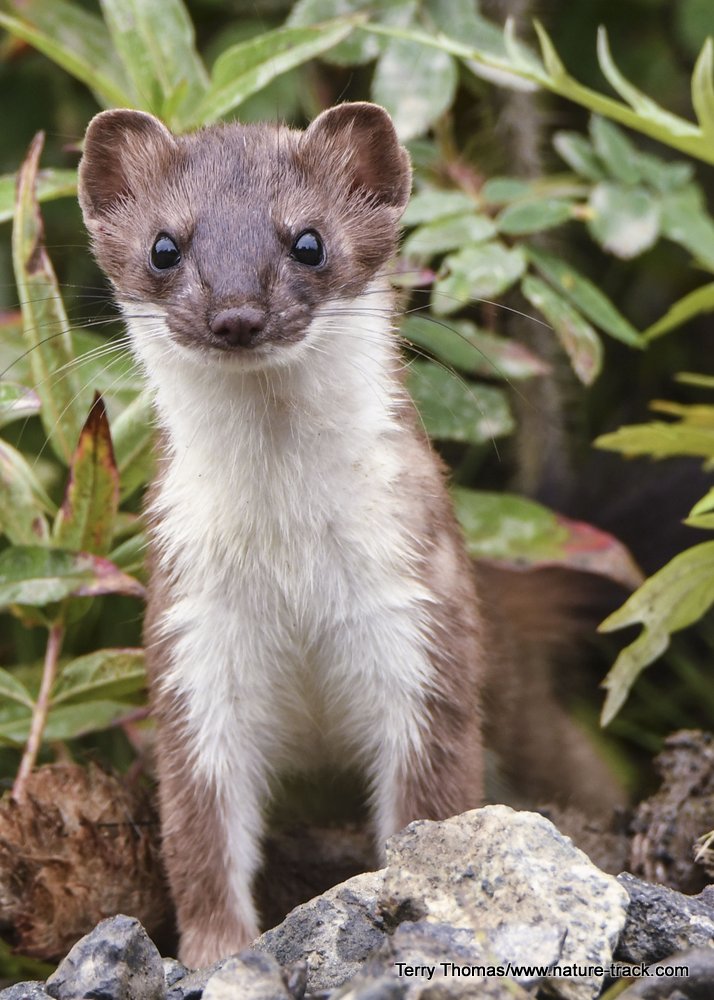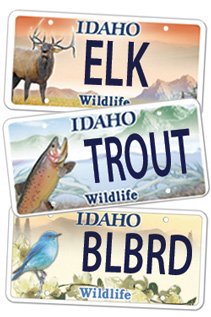Small Mammals Have Unique Requirements

This short-tailed weasel weighs in at about seven ounces and is a skilled predator.
With the melting snow, chipmunks, squirrels and voles have become more active at our place, enough so to attract a fox to our yard recently. Roadside marmots are awake in the valley although those that live in our rock wall are sleeping until more snow melts.
Defining a small mammal is often a matter of opinion, but many scientists have slowly settled on mammals weighing less than an average of five kilograms or about eleven pounds. That would exclude animals such as coyotes and even badgers, beavers and otter, but focuses the discussion on the truly small mammals that are far more abundant than we often realize.
Five kilos are the top end of size, but the smallest of the small mammals can barely tip a scale at all. The Etruscan shrew is the smallest by weight (1.8g or 0.063oz—a U.S. dime weighs 2.268 g), and Thailand’s bumblebee bat stretches to just over one inch in body length, the smallest by size.
This is a rather strange way to group animals. Besides being mammals, there are only two things I can think of that justifies such a grouping. First, being small, they are literally on the menu for every predator out there from grizzly bears to raptors to snakes and even other small mammals and they have to deal with that. The other similarity is that, being small, they have a lot of surface area relative to body mass and lose heat easily.
Just how diverse is this grouping? Small mammals include bats, the only mammals to conquer the sky. Many small mammals live underground, others in trees. Some, such as mink and muskrats, have become semi-aquatic. Members of this group exist in every habitat type and on every continent except Antarctica. From the deserts of Pakistan to the snowy Arctic, you will find small mammals of one kind or another. Many are rodents but there are representatives in many other groups as well.
Food habits are equally diverse. Bats are a good example. Many bats are insectivorous, and may consume thousands of insects a night. Others though are fruit eaters. Still others are nectar seekers and one, the feared vampire bat, makes a tiny cut in its victim and licks the blood. Other small mammals run the food gamut from strict granivores to herbivores that eat one specific plant to omnivores that will eat anything to voracious predators, including the grasshopper mouse that eats other mice. The six-inch-long pygmy marmoset of the Amazon, the world’s smallest true monkey, eats tree sap and has a specialized lower jaw for chewing through bark.
Coping with the metabolic challenges of small size in a cold climate is a common problem. As temperatures drop, metabolism must increase to stay warm. Shrews of all types balance metabolic losses by eating up to two times their weight in prey each day. Marmots, ground squirrels and many other species just turn off the lights and hibernate through the winter, depending on stored fat for survival. Others, such as tree squirrels, chipmunks and pikas, store food throughout the summer to live on during winter months.
The world’s smallest primate, a mouse lemur, has a different problem. It is hot in Madagascar and conserving water and energy is important during the dry season. They can lower their internal temperature and metabolic rate to compensate.
By their nature, small mammals are seldom seen, but there is a lot going on in that hidden world. It just seems right to take a moment to appreciate it.
Help Idaho Wildlife
When we traveled across the state in October 2017, we visited most of the Idaho Department of Fish and Game wildlife management areas. Most of the vehicles we saw using the wildlife management areas did not have wildlife plates. Buying wildlife plates is a great way for non-hunters and hunters alike to support wildlife-based recreation like birding.
C'mon folks, let's help Idaho's wildlife by proudly buying and displaying a wildlife license plate on each of our vehicles!
See below for information on Idaho plates. Most states have wildlife plates so if you live outside Idaho, check with your state's wildlife department or vehicle licensing division for availability of state wildlife plates where you live.
And tell them that you heard about it from Nature-track.com!

Wildlife License Plates
Great news! as of 2024, there are three NEW designs for license plates. They still are bluebird, cutthroat trout and elk, but they are beautiful.
Idaho Wildlife license plates provide essential funding that benefits the great diversity of native plants and wildlife that are not hunted, fished or trapped—over 10,000 species or 98% of Idaho’s species diversity. Game species that share the same habitats (such as elk, deer, antelope, sage-grouse, salmon, trout) also benefit from these specialty plates.
No state tax dollars are provided for wildlife diversity, conservation education and recreation programs. Neither are any revenues from the sale of hunting or fishing licenses spent on nongame species. Instead, these species depend on direct donations, federal grants, fundraising initiatives—and the Idaho Wildlife license plates.
Both my vehicles have Bluebird Plates. I prefer the bluebird because the nongame program gets 70 percent of the money from bluebird plates, but only 60 percent of the money from elk and trout plates - 10 percent of the money from elk plates supports wildlife disease monitoring and testing programs (to benefit the livestock industry) and 10 percent from cutthroat plates supports non-motorized boat access.
Incidentally, in 2014, the Idaho Legislature denied the Department of Fish and Game the ability to add new plates or even to change the name of the elk and cutthroat plates (very specific) to wildlife and fish plates, a move that would have allowed for changing images occasionally and generating more revenue. It would seem that they believe that we Idahoans don't want a well funded wildlife program.
I think it is time we let the Legislature know that Idahoan support wildlife funding and that we would like to see these generic plates come to fruition.

"WOW. What a phenomenal piece you wrote. You are amazing." Jennifer Jackson
That is embarrassing, but actually a fairly typical response to my nature essays. Since The Best of Nature is created from the very best of 16 years of these nature essays published weekly in the Idaho Falls Post Register (online readership 70,000), it is a fine read. It covers a wide variety of topics including humorous glimpses of nature, philosophy, natural history, and conservation. Readers praise the style, breadth of subject matter and my ability to communicate complex and emotional topics in a relaxed and understandable manner.
Everyone can find something to love in this book. From teenagers to octogenarians, from the coffee shop to the school room, these nature essays are widely read and enjoyed.
Some of the essays here are my personal favorites, others seemed to strike a chord with readers. Most have an important message or lesson that will resonate with you. They are written with a goal to simultaneously entertain and educate about the wonderful workings of nature. Some will make you laugh out loud and others will bring a tear to the eye and warm your heart.
Readers Write:
"You hit a home run with your article on, Big Questions in Nature. It should be required reading for everyone who has lost touch with nature...great job!" Joe Chapman
"We enjoyed your column, Bloom Where Planted. Some of the best writing yet. The Post Register is fortunate to have your weekly columns." Lou Griffin.
To read more and to order a copy, click here or get the Kindle version
Copies are also available at:
Post Register
Island Park Builders Supply (upstairs)
Barnes and Noble in Idaho Falls
Harriman State Park, Island Park
Museum of Idaho
Valley Books, Jackson Wyoming
Avocet Corner Bookstore, Bear River National Wildlife Refuge, Brigham City, Utah
Craters of the Moon National Monument Bookstore, Arco, Idaho
Wildlife License Plates
Great news! as of 2024, there are three NEW designs for license plates. They still are bluebird, cutthroat trout and elk, but they are beautiful.
Idaho Wildlife license plates provide essential funding that benefits the great diversity of native plants and wildlife that are not hunted, fished or trapped—over 10,000 species or 98% of Idaho’s species diversity. Game species that share the same habitats (such as elk, deer, antelope, sage-grouse, salmon, trout) also benefit from these specialty plates.
No state tax dollars are provided for wildlife diversity, conservation education and recreation programs. Neither are any revenues from the sale of hunting or fishing licenses spent on nongame species. Instead, these species depend on direct donations, federal grants, fundraising initiatives—and the Idaho Wildlife license plates.
Both my vehicles have Bluebird Plates. I prefer the bluebird because the nongame program gets 70 percent of the money from bluebird plates, but only 60 percent of the money from elk and trout plates - 10 percent of the money from elk plates supports wildlife disease monitoring and testing programs (to benefit the livestock industry) and 10 percent from cutthroat plates supports non-motorized boat access.
Incidentally, in 2014, the Idaho Legislature denied the Department of Fish and Game the ability to add new plates or even to change the name of the elk and cutthroat plates (very specific) to wildlife and fish plates, a move that would have allowed for changing images occasionally and generating more revenue. It would seem that they believe that we Idahoans don't want a well funded wildlife program.
I think it is time we let the Legislature know that Idahoan support wildlife funding and that we would like to see these generic plates come to fruition.